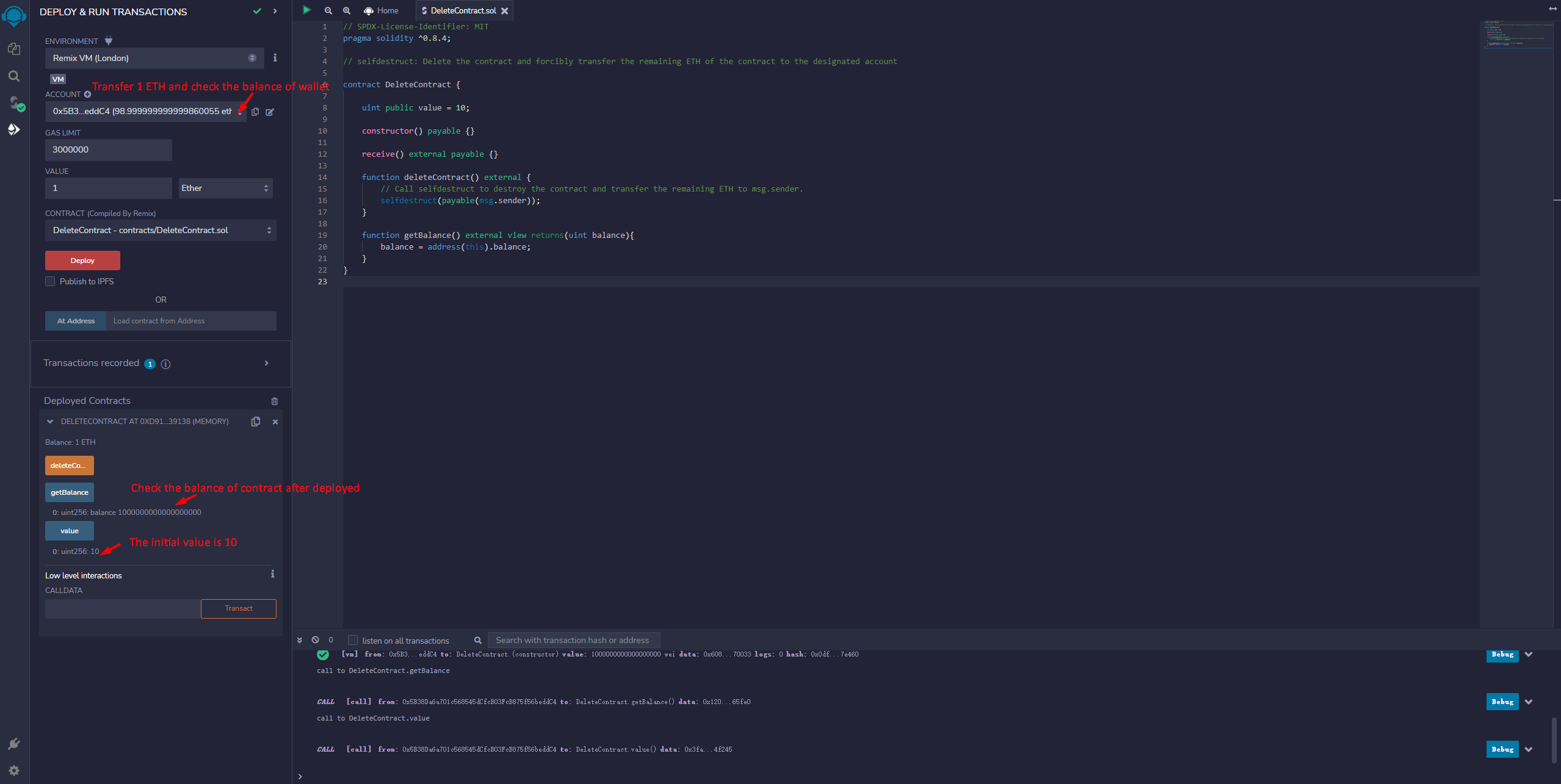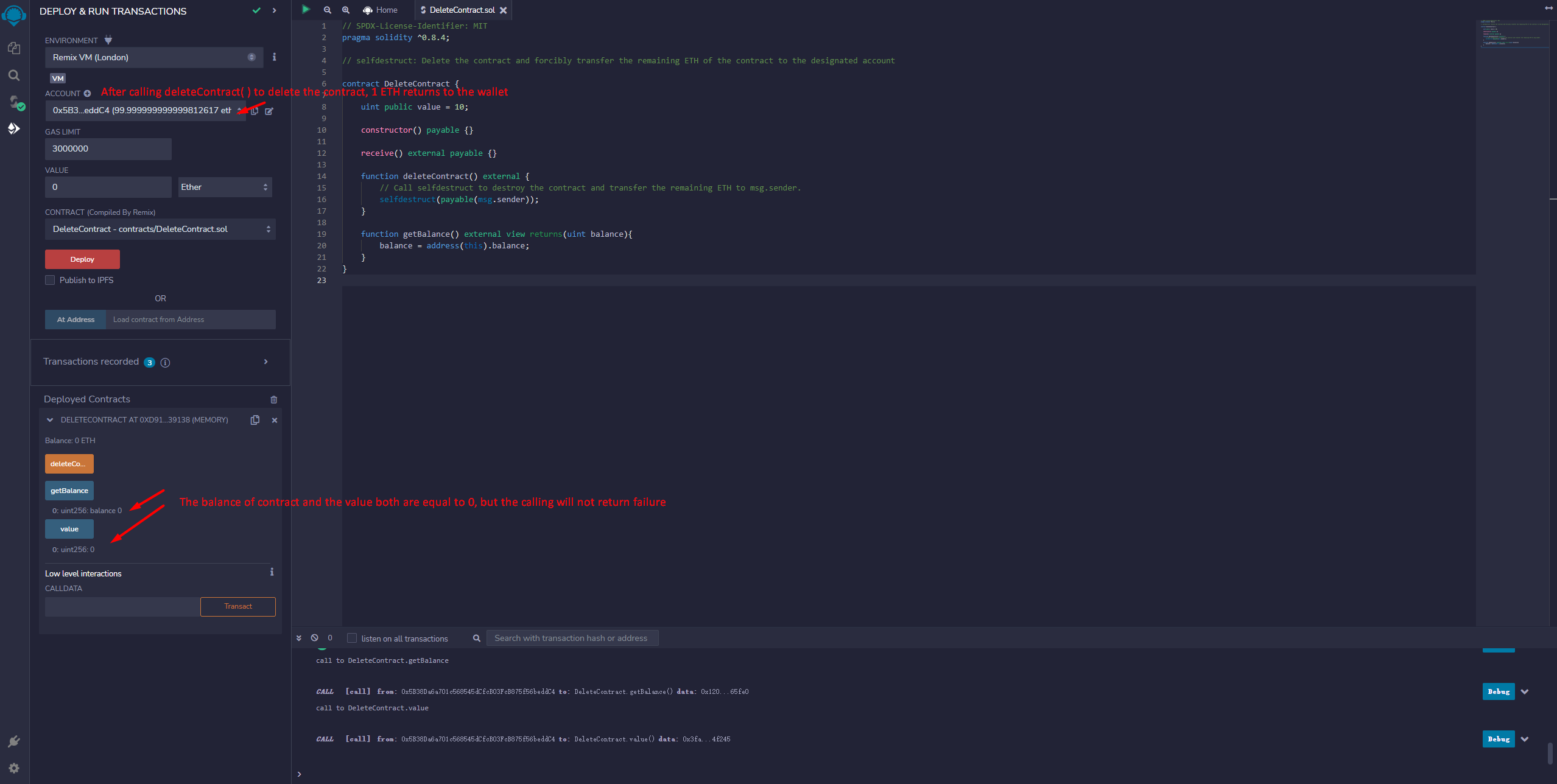WTF Solidity: 26. Delete Contract
Twitter: @0xAA_Science | @WTFAcademy_
Community: Discord|Wechat|Website wtf.academy
Codes and tutorials are open source on GitHub: github.com/AmazingAng/WTFSolidity
selfdestruct
The selfdestruct operation is the only way to delete a smart contract and the remaining Ether stored at that address is sent to a designated target. The selfdestruct operation is designed to deal with the extreme case of contract errors. Originally the opcode was named suicide but the Ethereum community decided to rename it as selfdestruct because suicide is a heavy subject and we should make every effort possible to not affect the programmer who suffer from depression.
How to use selfdestruct
It's simple to use selfdestruct:
selfdestruct(_addr);
_addr is the address to store the remaining ETH in the contract.
Example:
contract DeleteContract {
uint public value = 10;
constructor() payable {}
receive() external payable {}
function deleteContract() external {
// use selfdestruct to delete the contract and send the remaining ETH to msg.sender
selfdestruct(payable(msg.sender));
}
function getBalance() external view returns(uint balance){
balance = address(this).balance;
}
}
In DeleteContract,we define a public state variable named value and two functions:getBalance() which is used to get ETH balance of the contract,deleteContract() which is used to delete the contract and transfer the remaining ETH to the sender of message.
After the contract is deployed,we send 1 ETH to the contract. The result should be 1 ETH while we call getBalance() and the value should be 10.
Then we call deleteContract(). The contract will self-destruct and all variables will be cleared. At this time, value is equal to 0 which is the default value, and getBalance() also returns an empty value.
Attention
- When providing the contract destruction function externally, it is best to declare the function to only be called by the contract owner such as using the function modifier
onlyOwner. - When the contract is destructed, the interaction with the smart contract can also succeed and return
0. - Security and trust issues often arise when there is a
selfdestructfunction in a contract. The function ofselfdestructin the contract opens up attack vectors for attackers. For example, usingselfdestructto frequently transfer tokens to a contract to attack, this will greatly save the cost of GAS, although few people do this. In addition, thisselfdestructfeature reduces users' confidence in the contract.
Example from Remix
- Deploy the contract and send 1 ETH to the contract. Check the status of contract.

- Delete the contract and check the status of contract.

By checking the contract state, we know that ETH is sent to the specified address after the contract is destroyed. After the contract is deleted, we can still interact with the contract. So we cannot confirm whether the contract has been destroyed based on this condition.
Summary
selfdestruct is the emergency button for smart contracts. It will delete the contract and transfer the remaining ETH to the designated account. When the famous The DAO hack happened, the founders of Ethereum must have regretted not adding selfdestruct to the contract to stop the hacker attack.